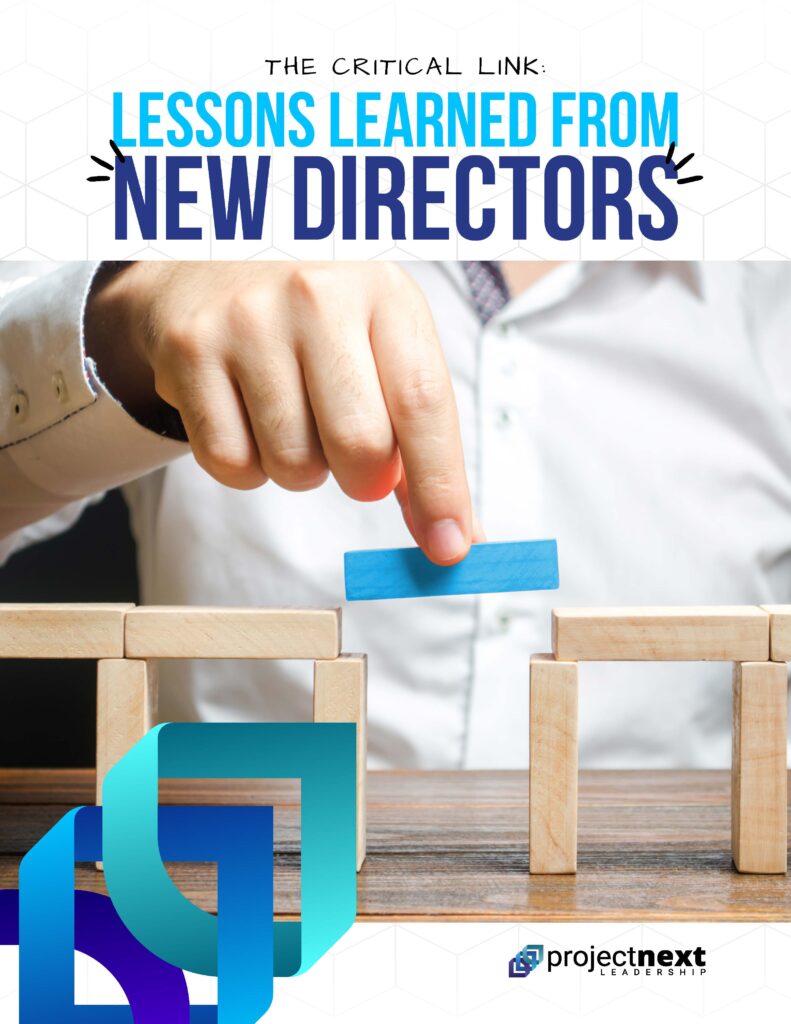By Jeff Rosenthal, Co-CEO of ProjectNext Leadership
(Originally published in Forbes on July 1, 2022)
Anything that’s really important in organizations today is achieved through cross-functional brain power and action. As organizations come to terms with this reality, they’re reevaluating every aspect of how they function. As organizations do that (and especially if they don’t), the implications for senior leaders are immense. Traditional definitions of senior leadership need to be transformed to acknowledge that leading across the enterprise is more important than ever and, in fact, is now as important as vertical leadership.
My organization, ProjectNext Leadership, recently studied the shift, not only because of the importance of these new skills but also because many clients expressed frustration that their leaders had not yet built the capability to do this well. We interviewed dozens of senior leaders who were identified by their companies as being “particularly good at leading across.” Through those interviews, we found that the best senior leaders—regardless of their industry or where they sit in their organizations—spend as much time leading across the enterprise as they do leading vertically in their functional domain. Admittedly, this surprised us. It also suggests a seismic shift in what we need to expect of leaders in high-impact roles.
It’s not enough for senior leaders to play nice at the top of the organization after they tend to their assigned parts of the business. We’ve found that the most successful senior leaders constantly employ “lateral agility.”
What is lateral agility?
Lateral agility sums up the mindsets, skills and processes for leading across, that is, leading outside a designated functional domain. In sports and martial arts, lateral agility is often described as the ability to change direction and move side to side quickly while maintaining your balance. In leadership, it’s about building meaningful relationships to explore and solve enterprise problems while flexing to meet the needs of the moment and styles of colleagues—all without losing focus on vertical leadership fundamentals.
What does it look like in practice?
Let’s start with what it isn’t. Lateral agility is not influencing stakeholders in your network to drive your agenda. Instead, it’s about identifying and addressing the organization’s agenda together. Lateral agility is also more than collaboration across silos. It’s about co-creation, weaving together collective wisdom to problem solve and innovate. It’s about mobilizing people around a shared purpose regardless of defined roles. Finally, given that lateral agility is not leader-centered like influence or role-based functional collaboration, inclusion is paramount. Solving broader organizational challenges requires true partnerships that reflect diversity of thought, experience, expertise and functional perspectives.
What can leaders learn from lateral agility?
Here are four key findings relating to lateral agility:
1. Lateral agility sits at the very core of success for leaders in high-impact roles.
We have always known that senior leaders need an enterprise mindset. What is most surprising, however, is the amount of time devoted to leading across as opposed to more traditional vertical leadership activities. The best leaders spend as much as half of their time working across the enterprise.
2. Even leaders who understand lateral agility have a significant ‘know-do gap.’
The successful senior leaders we interviewed rarely rated themselves higher than “reasonable” in working across the enterprise. They expressed greater comfort in leading vertically. Many feel like they are figuring out what works and that the development opportunities available to them have not caught up with the increased emphasis on leading across.
3. Leaders with lateral agility are strong vertical leaders, but the reverse is not necessarily true.
Transitioning to senior leadership from people manager roles is not just about moving up. It’s also about reaching out. Not all leaders who have been successful in leading vertically can apply what they know to effectively lead across the enterprise.
4. Leaders who demonstrate lateral agility typically excel in three particular areas.
The mindsets, skills and processes that differentiate these leaders are not necessarily new. What is different is the degree to which they are important, given the complexities of today’s work environment, the importance of retaining talent and the reality that you can’t leverage positional authority when the critical work is primarily cross-functional. Those areas include:
• Expanded Mindsets: Those who lead successfully value humility and an enterprise mindset. They don’t have all the answers and know they don’t need to.
• Super-Charged Skills: They demonstrate empathy and build relationships that matter. We’re talking about human-centered, meaningful relationships, which are the social capital that replaces position power and role-based collaboration.
• Innovative Processes: They employ co-creation and “sketch-based advocacy.” This means they may start with a germ of an idea but defer to their partners to color in the lines of the solution.
What are the implications for organizations?
Organizations that don’t build lateral agility into their leadership ranks may end up with well-intentioned leaders who lack the social capital to reach across silos, which leads to a lack of consolidated brain power to tackle the organization’s biggest challenges. Given that applying lateral agility can consume so much of a senior leader’s focus, organizations shouldn’t leave this aspect of leadership development to chance. They can focus on these three things:
• Expanding the definition of success for senior leadership.
• Filling the development gap with formal learning experiences that equip leaders in high-impact roles with the mindsets, skills and processes to lead with lateral agility.
• Aligning expectations, succession planning and incentives to today’s new leadership requirements.
When organizations make lateral agility a priority, their senior leaders can be better able to connect disparate parts of the business to a shared purpose, innovate in the absence of role clarity and galvanize talent to tackle the complexities of today’s workplace and marketplace.




